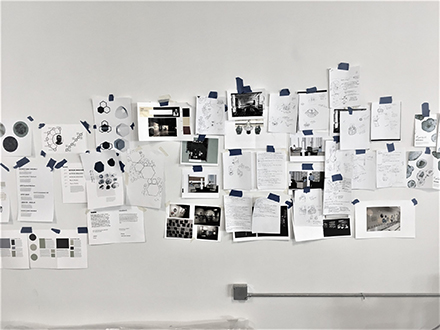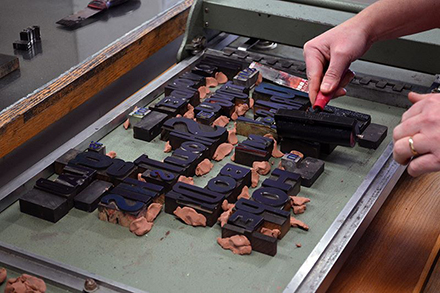Teaching Philosophy



Graphic design is a rapidly changing field that continues to evolve alongside the technology that often drives the means of production. As such, graphic design education needs to be more focused on critical thinking and problem solving skills than just focusing on learning the skills and technology used today. Graphic design educators need to focus on fostering these skills in order to prepare students for the future of the field, one that we may not imagine today. Graphic design education also should not be limited to those skills used in the design process. The goal of education should be to enrich students in all aspects of their education including interpersonal skills in order to produce thoughtful, respectful professionals.
As a teacher, I believe I should:
Share my passion and love for graphic design with my students. Students respond to teachers who clearly love the subject they teach. These teachers come alive when talking to students and their enthusiasm is contagious in the classroom. I strive to be one of these teachers and to continue sharing my passion for the field with them. I also believe that sharing my passion can help ignite and grow their passion for graphic design.
Show them design is not just a job. Graphic designers can do more than just sell products to consumers. I want my students to know that graphic designers also have social and ethical responsibilities to the public. I want them to know that they have the potential to use their design skills to help change the world.
Teach students how to teach themselves. The technology used in graphic design changes on a regular basis. The software they learn today may change drastically in a few years. I cannot just teach them how to use the current version of the software. Instead, I need to focus on strategies that teach them how to locate information and learn on their own. These skills will serve them far into the future.
Teach students that technology is a tool, not the answer. Too often, students allow the technology to drive their solutions instead of focusing on the solution and then figuring out how to realize it. A pencil can be technology just like a computer. The solution should be the best one for the problem, not just the best one the technology will allow you to create.
Learn about my students. By knowing your individual students needs, you can better serve their unique needs. This does not mean you need to know every little detail about their lives. It means you learn their names, try to assess their skills, and understand any challenges they may have (i.e. are they autistic, do they have a learning disability, etc.). It’s hard to effectively teach students by assuming all students are alike. It also allows me to tailor my lessons with examples the students can relate to in order to improve student engagement and learning outcomes.
Encourage students to explore current design and historical design. Design cannot exist in a vacuum. Students need to explore what is currently happening in design as well as historical design movements in order to inspire and inform their work. Students need to understand what might influence their work as well as understand what others might see in their work.
Foster creativity and seeking inspiration. Design can be a very draining profession as you constantly have to come up with ideas, preferably unique ideas. I need to provide students with strategies to help them spark their creativity when stuck. I also want to encourage students to seek out inspiration from a wide range sources in order to foster creativity along with helping students generate new ideas. Inspiration can come from anywhere.
Model good communication and interpersonal skills. Teaching graphic design is not just about teaching skills related to design. It is also about teaching students skills like working in groups successfully, how to act on job interviews, the appropriate way to communicate via email, and other similar skills. I need to lead by example in these areas and model appropriate behavior.
Design my courses’ curriculum to meet college-determined standards as well as reflect the best pedagogy based strategies to produced the best possible learner outcomes. I will continue to improve my teaching by learning more about pedagogy and how to effectively apply it to my classroom and the design of learning materials. My focus is on continually improving my courses in order to support learning outcomes and student performance. I also create my assignments to be flexible enough that all skill levels can be challenged as well as given them options so they can use their strengths to maximize their success on the assignment.
My goal is to produce students who are:
- Inspired
- Passionate.
- Curious.
- Socially and Ethically Responsible.
- Problem Solvers.
- Critical Thinkers.
